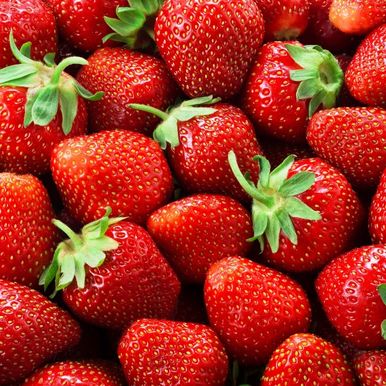The Dirty Dozen Chemicals Found In Most Households
We’re told to eat lots of fruit and veggies, but many don’t know that they are bringing pesticides into their home when they get back from the grocery store.
What Are The Dirty Dozen? Pesticides In Fruits and Vegetables
The Dirty Dozen is made up of 12 produce items that are found to have the highest levels of pesticide residue. Pesticides are dangerous to consume, and can have adverse health benefits like birth defects, cancer, nervous or immune system damage, alzheimers, and ADHD, among other things. Pesticides can remain in and on fruits and veggies even after peeling, scrubbing and washing them!
Organic products are a great way to still enjoy your favorite fruits and veggies without worrying about the pesticides! However, the benefits of eating non-organic fruits and veggies still far outweighs the downsides of not eating any at all!

Here is a list of the dirty dozen – the 12 produce items that you should try to buy from the organic section instead!
Meet The EWG's Dirty Dozen of 2023
- Strawberries
- Spinach
- Kale, Collard and Mustard Greens
- Peaches
- Pears
- Nectarines
- Apples
- Grapes
- Bell and Hot Peppers
- Cherries
- Blueberries
- Green Beans

Meet The EWG's Clean 15
We know organic foods tend to be more costly than the non-organic alternatives. There are also certain fruits and veggies that do not contain or carry a lot of pesticides, so they are the ones that are still good to buy non-organic! Known as the clean fifteen, they comprise:
- Avocados
- Sweet Corn
- Pineapple
- Onions
- Papaya
- Sweet Peas (frozen)
- Asparagus
- Honeydew Melon
- Kiwi
- Cabbage
- Mushrooms
- Mangoes
- Sweet Potatoes
- Watermelon
- Carrots


Author
Abby Maxwell
Join Our Email Community
Gain exclusive access to green trends, tips, and tricks when you sign up for our free newsletter. Enter your email to join our community of changemakers!
VOCs in Common Household Items
Now that we’ve covered the best fruits and veggies to buy organically, let’s talk about the different pollutants that can be found in the different products you may have in your house or under your bathroom sink.
What are VOC's
VOCs stands for volatile organic compounds and they are released in gas form from certain substances. Many of them are human made, and actually quite dangerous to our health when they enter our system. VOCs can irritate your eyes, nose, and throat, and can also cause difficulty breathing, nausea, and damage your central nervous system, with the additional risk of causing cancer.
VOCs are consistently more dangerous indoors, by almost tenfold. They are commonly found in cleaning products, office supplies like printers, adhesives, varnishes and finishes, flooring and carpet, air fresheners, and cosmetics, just to mention a few.

Tips For A Nontoxic Home
VOCs are dangerous, but there are things we can do to avoid them!
- Use natural, VOC-free, fragrance free cleaning supplies, or even try making your own!
- When buying building supplies and paints, look for products that indicate “low VOCs” on the label.
- If you can’t use the product outdoors, use ventilation, open windows, and proper personal protective equipment when working indoors with VOCs
- Try different ways of tackling your project, for example, use integrated methods for pest control instead of using pesticides
- Try purchasing natural and fragrance-free cosmetic and beauty products
- Allow fresh air to circulate in your home frequently
If you liked this article, check out further actionable tips you can take to protect your local waterways in this blog post here.
Do you have other microplastic pollution prevention tips you can share with the community?
Feel free to share them along with this article on your socials!
dirty dozen and clean 15
pesticide free food list
More Blog Posts:

Sustainable LGBTQ Owned Brands and Organizations To Support For Pride Month (and beyond!)
Sustainable LGBTQ owned Businesses to support! Learn about the connection between this community & their inclusion in the environmental movement.

The Guide to Veganuary!
Whether you are going full vegan or starting to eat less meat, our guide to veganuary will help you go plant-based in 2023.





